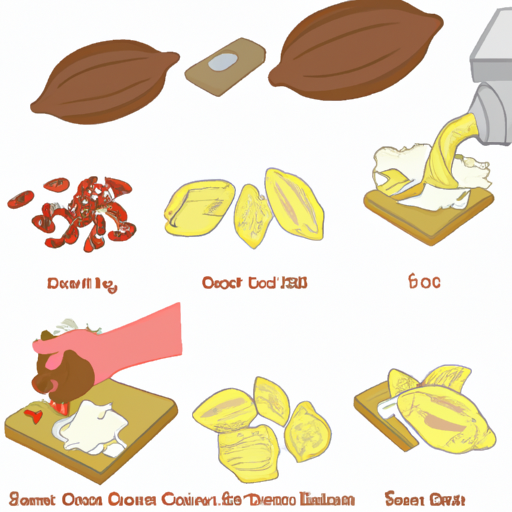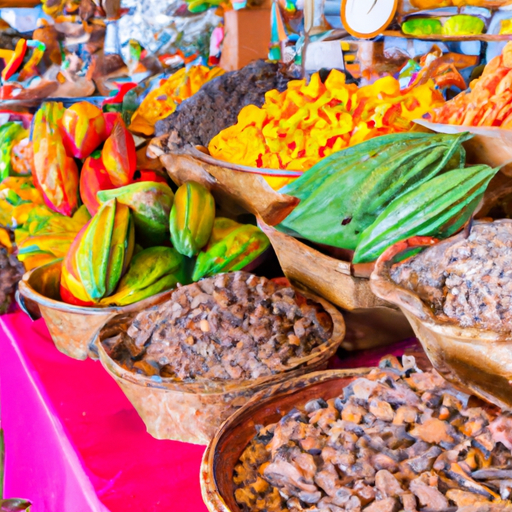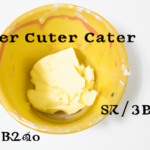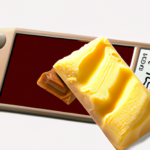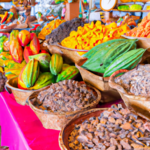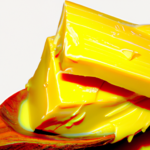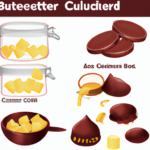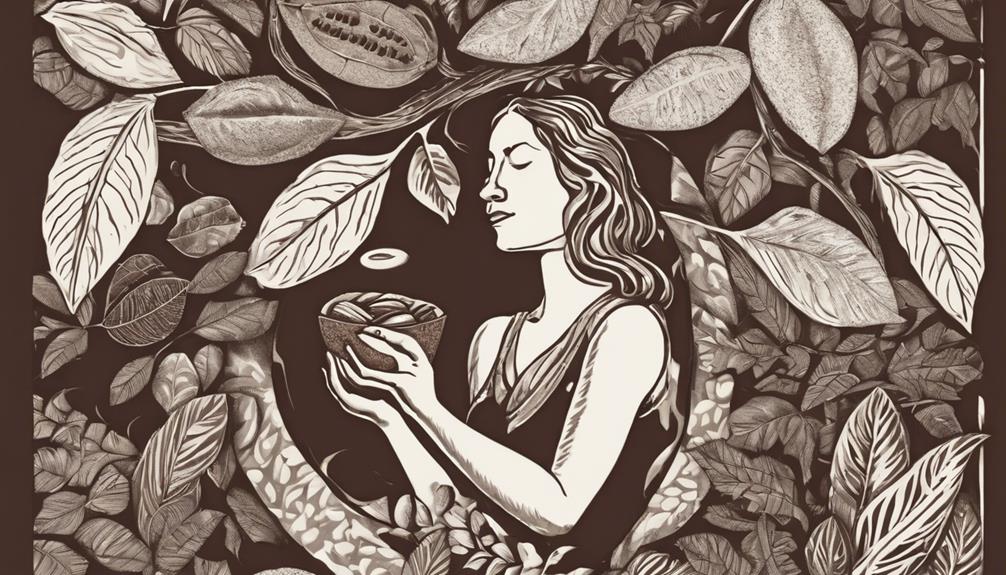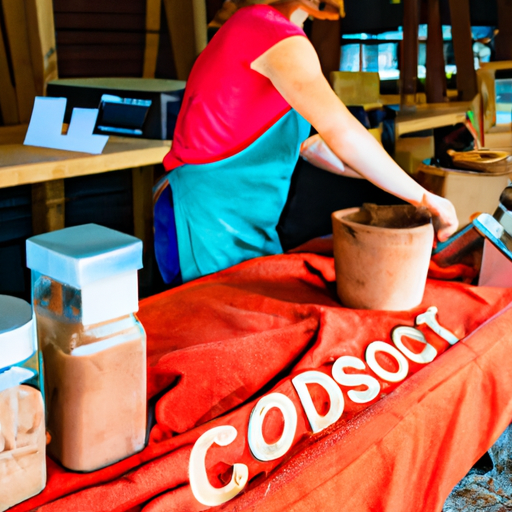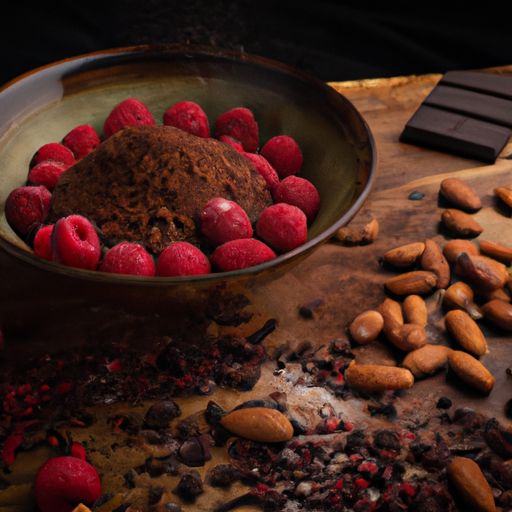As I explore the realm of culinary creations, I am enchanted by the decadent and creamy appeal of raw cacao butter. This indulgent ingredient, with its rich scent and silky consistency, is the secret to discovering a plethora of delicious possibilities.
Allow me to guide you through the process of creating your very own raw cacao butter, step by step, ensuring every detail is accurately described.
With a scientific approach, we will explore the chemical processes involved in making cacao butter, from the role of fats to the art of emulsification and temperature control. As we delve into the technical aspects, we will employ precise measurements, temperatures, and techniques to achieve the desired result.
But this journey is not purely scientific; it is also one of knowledge and information. We will uncover the nutritional content and potential health benefits of raw cacao butter, as well as its versatility in culinary delights.
So, gather your ingredients and equipment, for we are about to embark on a tantalizing adventure into the world of homemade raw cacao butter.
Key Takeaways
- Raw cacao butter is a luxurious ingredient with a rich aroma and smooth texture, suitable for culinary and skincare uses.
- The process of making raw cacao butter involves roasting high-quality cacao beans, grinding them to extract the fats, and separating the nibs from the husks for purity.
- Melting and straining the cacao butter requires controlled temperature for proper tempering and straining for a smoother consistency.
- After melting, the cacao butter can be poured into molds or containers for portioning and should be allowed to solidify in a cool, dry area. Proper storage in an airtight container can extend its shelf life.
Gather the Necessary Ingredients and Equipment
To make raw cacao butter, gather the necessary ingredients and equipment. Start by getting high-quality cacao beans, preferably organic and fair-trade. You can find them at specialty stores or order online. Also, you’ll need a grinder or food processor to crush the beans into a fine powder. Use a double boiler or a heat-resistant bowl over simmering water for melting the ground cacao beans. Have a spatula or whisk for stirring the mixture. For shaping the cacao butter, use different types of chocolate molds in various shapes and sizes. It’s worth mentioning that cacao butter has alternative uses, such as in skincare products or as a moisturizer. Once you have everything, proceed to the next step of roasting and grinding the cacao beans.
Roast and Grind the Cacao Beans
Once you’ve got your hands on those rich cacao beans, it’s time to roll up your sleeves and get ready to roast and grind them into a heavenly concoction.
To bring out the full flavor of the cacao beans, there are various roasting techniques you can employ. You can opt for a low and slow roast, which involves baking the beans at a low temperature for a longer duration, or a high heat roast, which quickly develops a rich aroma.
After roasting, it’s time to grind the beans. There are different grinding methods available, such as using a mortar and pestle or a specialized grinder. The grinding process helps break down the beans into smaller particles, allowing the fats to be extracted more efficiently.
Once the beans are ground to a fine consistency, you can proceed to the next step of separating the cacao nibs from the husks.
Separate the Cacao Nibs from the Husks
To free the precious cacao nibs from their husky confines, it’s time to employ a nifty technique that will have you separating them with ease. First, gather your roasted cacao beans and place them into a clean bowl. Using your hands or a utensil, gently crush the beans, ensuring that the husks begin to separate from the nibs.
Next, transfer the crushed beans into a large sieve or colander and shake it gently. As you do this, the lighter husks will float to the top, while the heavier nibs will remain at the bottom. Carefully remove the husks, preserving the valuable nibs.
By separating the cacao nibs from the husks, you ensure that you have the purest form of cacao for making raw cacao butter. This process also allows you to reap the benefits of using raw cacao butter in skincare.
Now, let’s move on to the next step: melting the cacao nibs.
Melt the Cacao Nibs
Now that you’ve separated the precious cacao nibs from their husks, it’s time to unleash their rich and velvety potential by melting them into a luscious liquid chocolate potion.
To begin, measure out the desired amount of cacao nibs and place them in a heat-safe bowl. Using a double boiler or microwave, gently apply heat to the nibs until they melt completely. It’s crucial to maintain a controlled temperature throughout the melting process to properly temper the cacao butter. The ideal range is between 104-113°F (40-45°C).
Stir the melted cacao butter occasionally to ensure even heating and smooth texture. Once fully melted, remove from heat and allow it to cool slightly before using in recipes. Tempered raw cacao butter adds a glossy finish and enhances the texture of desserts and confections.
Now, let’s move on to the next step and strain the melted cacao for a smoother consistency.
Strain the Melted Cacao
After melting the cacao nibs into a luscious liquid, it’s time to strain the velvety chocolate to achieve a smoother and more refined consistency. To strain the melted cacao, you will need a fine mesh strainer or cheesecloth. Place the strainer or cheesecloth over a bowl or container to catch the strained cacao. Carefully pour the melted cacao into the strainer, allowing the liquid to flow through while capturing any solid particles. Gently press down on the cacao solids to extract as much liquid as possible. This process helps remove any remaining bits of cacao nibs and ensures a silky texture for the final product. Once strained, your raw cacao butter is ready for the next step: pouring the melted cacao into molds or containers. This will create convenient portions for future use in various culinary creations.
Pour the Melted Cacao into Molds or Containers
Once you’ve achieved the desired consistency, it’s time to transfer the smooth, velvety liquid into molds or containers for easy portioning and future culinary adventures. Molding techniques play a crucial role in shaping the cacao butter into desired forms.
Silicone molds are highly recommended as they allow for easy removal and maintain the integrity of the cacao butter. Alternatively, you can use ice cube trays or small glass jars as containers.
Carefully pour the melted cacao butter into the molds or containers, ensuring that they are filled to the desired level. To create uniform shapes, gently tap the molds or containers on a flat surface to release any trapped air bubbles.
Once filled, place the molds or containers in a cool, dry area to allow the cacao butter to solidify. This step ensures that the butter sets properly before moving on to the next stage of the process: allowing the cacao butter to solidify.
Allow the Cacao Butter to Solidify
Let the luscious liquid turn into a solid delight as you allow the cacao butter to firm up. To solidify the cacao butter, follow these precise and detailed steps:
- Place the molds or containers with the melted cacao butter in a cool and dry area.
- Ensure that the temperature is around 55-65°F (13-18°C) to facilitate the solidifying process.
- Avoid placing the cacao butter in the refrigerator, as it can cause rapid solidification and affect the texture.
- Leave the cacao butter undisturbed for approximately 2-3 hours, or until it reaches a solid state.
- During this time, the fats in the cacao butter will undergo crystallization, resulting in a smooth and creamy texture.
Solidifying the cacao butter properly ensures that it maintains its desirable properties. The benefits of using raw cacao butter include its high content of healthy fats and antioxidants, which can contribute to improved heart health and overall well-being.
Once the cacao butter has solidified, it is ready to be stored properly for future use in culinary creations.
Store the Cacao Butter Properly
To properly store your solidified cacao butter, find a cool and dry spot where it can be safely tucked away for future culinary adventures. Proper storage techniques are crucial to extending the shelf life of your homemade raw cacao butter. Keep in mind that cacao butter is sensitive to light, heat, and moisture, so it’s important to protect it from these elements. I recommend using an airtight container made of glass or food-grade plastic to prevent any odors or contaminants from affecting the quality of your cacao butter. Additionally, store it away from any strong-smelling foods to avoid flavor transfer. It’s also a good idea to label the container with the date of preparation to keep track of its freshness. By following these storage guidelines, you can ensure that your homemade raw cacao butter stays fresh, flavorful, and ready to enhance your culinary creations. Now, let’s move on to the next section and learn how to enjoy your homemade raw cacao butter.
Enjoy Your Homemade Raw Cacao Butter
Now that you’ve successfully stored your culinary treasure, it’s time to indulge in the delicious possibilities that await with your homemade raw cacao butter.
To use raw cacao butter in recipes, start by gently melting it over low heat until it becomes a smooth liquid. It’s important to use low temperatures to preserve its delicate flavor and nutritional properties.
Once melted, you can incorporate the cacao butter into a wide range of recipes. It adds a rich and creamy texture to smoothies, desserts, and baked goods.
Additionally, raw cacao butter is known for its health benefits. It is packed with antioxidants, vitamins, and minerals that support cardiovascular health and boost mood. Its natural fats also provide a sustained source of energy.
So go ahead and experiment with this versatile ingredient to create delectable treats that are both delicious and nutritious.
Frequently Asked Questions
How long does it take for the cacao butter to solidify?
The solidification time of cacao butter can vary depending on several factors. To speed up the process, factors such as temperature, fat content, and emulsification techniques can be optimized.
Can I use a regular blender to grind the cacao beans?
Using a regular blender for grinding cacao beans is not recommended as it may not achieve the desired texture. Instead, alternative methods like using a food processor or a specialized grinder are more effective.
How should I store the cacao butter to ensure it stays fresh?
To ensure proper storage and maximize the shelf life of cacao butter, it should be stored in an airtight container in a cool, dark place, away from sunlight and moisture. This will help maintain its freshness and prevent oxidation.
Can I use roasted cacao beans instead of raw cacao beans?
Roasted cacao beans have a distinct flavor profile compared to raw cacao beans. The roasting process enhances the chocolatey taste and aroma, but it also reduces the nutritional content.
What are some common uses for raw cacao butter?
Raw cacao butter has various uses in skincare, as it helps moisturize and nourish the skin. In baking, it adds a rich, chocolatey flavor and enhances the texture of desserts. Its high antioxidant content provides potential health benefits.
What Are Some Recipes or Ways to Use Raw Cacao Butter?
Raw cacao butter can be used in various recipes to add a rich and creamy texture. Some popular ways of using raw cacao butter are in homemade chocolate bars, smoothies, or as a substitute for traditional butter in baked goods. Its velvety texture and subtle chocolate flavor elevate any dish.
Conclusion
In conclusion, making homemade raw cacao butter requires precision and attention to detail. By following the step-by-step instructions, you can successfully create this delicious and nutritious ingredient.
Remember to gather all the necessary ingredients and equipment, roast and grind the cacao beans, separate the nibs from the husks, melt the nibs, strain the melted cacao, and pour it into molds or containers.
Allow the cacao butter to solidify and store it properly. By understanding the scientific processes involved, you can fully appreciate the role of fats, emulsification, and temperature control in creating the perfect cacao butter.
Enjoy the rich and decadent flavors of your homemade creation, knowing that it offers numerous health benefits and endless culinary possibilities. So grab your apron and embark on this delightful journey to make your own raw cacao butter – it’s time to indulge in a little chocolate magic!

